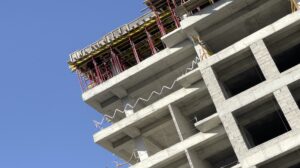Exploring the Benefits of Building a Passive House: What You Need to Know
Passive houses are becoming increasingly popular as a way to reduce energy consumption and create a more comfortable living environment. Passive houses are designed to use the natural environment to provide heating and cooling, while also reducing the amount of energy needed to maintain a comfortable temperature. This article will explore the benefits of building a passive house, as well as what you need to know before taking the plunge.
The primary benefit of building a passive house is energy efficiency. Passive houses are designed to use the natural environment to provide heating and cooling, while also reducing the amount of energy needed to maintain a comfortable temperature. This means that passive houses can reduce energy consumption by up to 90%, compared to traditional homes. This can result in significant savings on energy bills, as well as a reduction in the environmental impact of the home.
In addition to energy efficiency, passive houses also offer improved air quality. Passive houses are designed to be airtight, which means that they are able to keep out pollutants and allergens. This can help to reduce the risk of respiratory illnesses, as well as providing a healthier living environment.
Finally, passive houses are also designed to be more comfortable. Passive houses are designed to take advantage of the natural environment, which means that they are able to maintain a comfortable temperature without the need for additional heating or cooling. This can result in a more comfortable living environment, as well as a reduction in energy costs.
Before building a passive house, there are a few things that you need to consider. Firstly, you need to make sure that the house is designed to take advantage of the natural environment. This means that the house should be well insulated, and should be designed to take advantage of the sun’s energy. Additionally, you should also make sure that the house is airtight, as this will help to reduce energy consumption and improve air quality.
In conclusion, building a passive house can offer a range of benefits, from energy efficiency to improved air quality. However, it is important to make sure that the house is designed to take advantage of the natural environment, and that it is airtight. By doing so, you can ensure that you get the most out of your passive house, and enjoy the benefits for years to come.
How to Design a Passive House for Maximum Efficiency
Designing a passive house for maximum efficiency requires careful consideration of the building’s orientation, insulation, airtightness, ventilation, and windows. By following these steps, you can create a home that is comfortable, energy-efficient, and cost-effective.
Orientation: The orientation of the house is key to its efficiency. The building should be oriented so that the longest walls face south, allowing for maximum solar gain. This will help to reduce the need for heating and cooling.
Insulation: Insulation is essential for a passive house. The walls, roof, and floor should be insulated to a high standard, with a minimum of R-20 for walls and R-40 for the roof. This will help to keep the house warm in winter and cool in summer.
Airtightness: Airtightness is also important for a passive house. The building should be sealed as tightly as possible to prevent air leakage. This will help to reduce energy loss and keep the house comfortable.
Ventilation: Ventilation is essential for a passive house. The building should be equipped with a mechanical ventilation system that provides fresh air while exhausting stale air. This will help to keep the air in the house clean and comfortable.
Windows: Windows are an important part of a passive house. The windows should be designed to maximize solar gain in winter and minimize it in summer. This will help to reduce the need for heating and cooling.
By following these steps, you can design a passive house that is energy-efficient and cost-effective. With careful consideration of the building’s orientation, insulation, airtightness, ventilation, and windows, you can create a home that is comfortable and efficient.
The Cost of Building a Passive House: Is It Worth It?
The concept of a passive house is an attractive one for many homeowners. It promises to reduce energy costs, improve air quality, and provide a comfortable living environment. But is the cost of building a passive house worth it?
The cost of building a passive house can vary greatly depending on the size and complexity of the project. Generally, the cost of building a passive house is higher than that of a traditional home. This is due to the additional insulation, airtightness, and ventilation systems that are required to meet the strict standards of a passive house.
However, the long-term savings of a passive house can be significant. Passive houses are designed to be highly energy efficient, meaning that they require less energy to heat and cool than traditional homes. This can result in lower energy bills over time. Additionally, passive houses are designed to be airtight, which can help to improve air quality and reduce the amount of allergens and pollutants in the home.
The cost of building a passive house can also be offset by government incentives. Many governments offer tax credits and other incentives to homeowners who build passive houses. These incentives can help to reduce the cost of building a passive house and make it more affordable.
Overall, the cost of building a passive house can be high, but the long-term savings and improved air quality can make it worth the investment. With the right incentives, the cost of building a passive house can be more affordable and the benefits can be significant.

Julien S.
Julien S.Julien est un expert en technologie et en innovation. Ses connaissances pointues dans ces domaines font de lui un pilier au sein de l'équipe d'hsmaicuracao.org. Toujours à l'affût des dernières avancées technologiques et des tendances émergentes, Julien offre aux lecteurs un regard aiguisé sur l'évolution du monde numérique. Grâce à ses articles détaillés et instructifs, il permet à chacun de mieux comprendre l'impact de la technologie sur notre société.

















